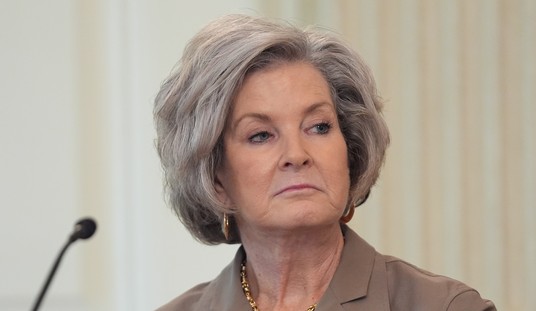The First Amendment won big at the end of February. Due to an avalanche of public opposition, the Federal Communications Commission (FCC) cancelled the so-called Critical Information Needs study. Americans across the political spectrum joined ranks to make two things clear. First, the government has no place in the newsroom. And second, the American people—not the FCC—should decide what information is important.
Fortunately, the good news for free speech on our nation’s airwaves did not stop there. In another defining moment for the First Amendment, the FCC stood firm earlier this month and rejected a demand to shut down two Wisconsin radio stations. The stations’ alleged crimes? Their hosts and guests made too many favorable comments about Wisconsin Governor Scott Walker during his 2012 recall campaign and didn’t say enough nice things about his Democratic opponent. That’s right; for this reason and this reason alone, petitioners urged the FCC to banish these stations from the airwaves.
In making this request, the stations’ opponents invoked an obscure FCC policy called the Zapple Doctrine. My initial reaction was probably similar to yours: “What the heck is the Zapple Doctrine?” Perhaps one reason was that the FCC last endorsed this doctrine back in the 1980s, when I was in middle school.
The Zapple Doctrine is named after Nicholas Zapple, one-time counsel to the U.S. Senate Commerce Committee. It’s an outgrowth of the now-infamous “Fairness Doctrine,” which was an antiquated set of rules that required broadcast stations expressing views favoring one side of a controversial issue to give equal time to the other side’s views. In 1970, Mr. Zapple asked the FCC whether the Fairness Doctrine extended to spokesmen for or supporters of political candidates who voiced their opinions on air (as opposed to the candidates themselves). A few weeks later, the FCC said it did.
The Commission used the following theory to justify the government’s policing of broadcasters’ editorial decisions under the Fairness Doctrine. Because the medium used by broadcasters to reach the public—known as spectrum—was scarce, the FCC claimed it had the power to regulate the viewpoints expressed over this scarce resource in the “public interest.” The U.S. Supreme Court bought this argument and upheld the Fairness Doctrine in 1969.
Almost twenty years later, however, the FCC unanimously—and rightly—repudiated the Fairness Doctrine. It recognized that this intrusive regulation unnecessarily chilled free speech. Moreover, treating broadcasters differently from other types of media didn’t make sense given the evolution of the media marketplace. Although it appeared obvious that the repeal of the Fairness Doctrine also meant the death of the Zapple Doctrine, the FCC didn’t formally say as much at the time.
Which takes us to the petition to take the Wisconsin stations off the airwaves. In rejecting this request in early May, the FCC finally confirmed that the Zapple Doctrine is indeed dead. The Commission emphatically stated that there is “no basis to enforce the Zapple Doctrine.” If the marketplace of 1987 was diverse enough that the Fairness Doctrine was no longer justified, there is no way that the Zapple Doctrine could survive in today’s marketplace—a marketplace in which countless viewpoints are only a tweet or blog post away.
More critically, policies such as the Fairness and Zapple Doctrines suppress public debate—a debate that has never been more vigorous. We live in an age when consumers can get news and opinion from numerous sources, including print, television, radio, or the Internet. Whether, why, how, and when these outlets cover stories is nowadays driven by consumers, and shouldn’t be second-guessed by a majority of FCC Commissioners or a miniscule but vocal minority trying to cast heckler’s vetoes.
Today’s market-motivated diversity is something to celebrate for those who cherish core constitutional freedoms. For the government has never forced liberal newspapers to reserve column space for conservatives to express opposing views, or vice versa—nor should it. The First Amendment guarantees newspaper editors the freedom to decide how they cover a news story as well as what opinions to express. But the Zapple Doctrine, like its parent the Fairness Doctrine, effectively deprived broadcasters of these same editorial freedoms.
In asking the FCC to shut down two Wisconsin broadcast stations that they deemed to be too favorable to Governor Walker while ignoring the countless other media outlets that many would argue were unfavorable to Governor Walker, the petitioners were asking the FCC to issue a decree that would be anything but “fair.” Indeed, the FCC’s recent ruling noted that while the Wisconsin stations’ detractors invoked the Zapple Doctrine, their “real complaints relate[d] to the Station’s programming choices”—choices over which the FCC “cannot exercise any power of censorship.” I’m glad that the agency recognized these efforts for what they were—poorly-veiled attempts to silence political opponents.
The end of the Zapple Doctrine presents an important lesson: There will always be someone eager to manipulate the levers of government to serve a political end. It is our responsibility to stand against such efforts and the tactics of political intimidation. We must continue to reject attempts to micromanage the marketplace of ideas and limit media choices. We must continue to empower consumers to make their own decisions and give news outlets the flexibility to make their own editorial judgments. And we must always stand up for the First Amendment—even when, especially when, it’s “controversial.”












Join the conversation as a VIP Member